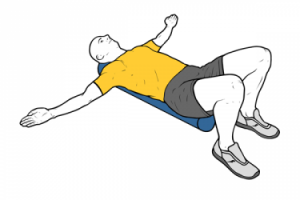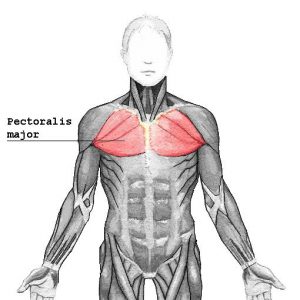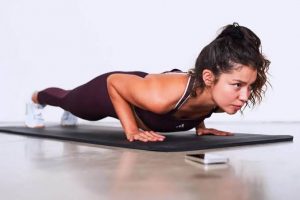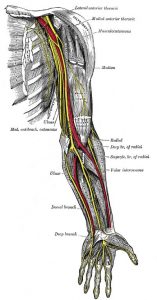In this series of reviews we take a look at the major muscles in the body. How they work, how they get injured and how we can look after them. Today’s muscle in review: pectoralis major.
Pectoralis Major: The Muscle
More commonly known as one of the ‘pecs’, pectoralis major is the largest muscle in the shoulder rotator cuff group. Located at the front of the chest. It attaches from the sternum and collar bone, to the top of the humerous.
It’s main job is to help raise and lower your upper arm. It also helps rotate the top of the shoulder. A common pectoralis major exercise is the chest press or push ups.
The Trigger Points
When there are trigger points in the pectoralis major, pain and tension will occur in the chest area. Pain may also refer down the inside of the arm into the inside of the forearm and hand.
The symptoms include pain in the front of the chest, front of the shoulder pain. Hypersensitive nipples or breast pain, pain inside the elbow. Rapid/fluttery/irregular heartbeat/heart attack-like pain*. Wrist & palm pain and pain in the back of the fingers or inside of the arm.
Tension in the pectoralis major can also cause obstruction to the bracial plexus. This is the major network of nerves controlling the functions of the arm. When this occurs, symptoms may include numbness, tingling and weakness in the arm. Especially in or from the thumb.
The Treatment
When treating pectoralis I generally use manual techniques. This includes myofascial release and deep tissue massage from the sternum into the top of the arm. Pausing to compress at any active trigger points until they release.
If you are doing stretches for your neck and shoulders, don’t forget to also stretch your pectorials. The most convenient way to stretch them is to lean into a doorway. Hold a door jam (or one side at a time), and gently step through. Experiment with the height of your hands to stretches the correct muscle fibres.
Or on a foam roller/rolled up towel;

Lie vertically on a foam roller with your buttocks and head supported. Bring your arms to 90 degrees with your hands facing up. Gently rest your arms on the ground and hold the stretch for at least 30-60 seconds.
If the stretch is too much, place towels or pillows under your hands so that the stretch is more comfortable.
*Please ensure if you ever feel chest pain or heart attack symptoms to immediately seek emergency medical care







